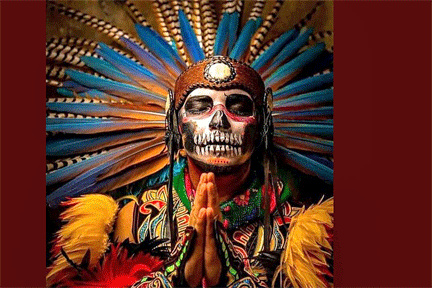Talk: Dia de Los Muertos [] Somos Language and Art Center
Event Category: All Events, Learning/Education, Presentations/Discussions, Mexico Holidays/Observances, and Dia de los Muertos/Day of the Dead
-
Talk and presentation location;
Somos Language and Art Center
Refugio Sur 35 Col San Antonio
October 11th 11:00 am
Efrain Gonzalez 415 109 7994
Cost is free
Reservation required.
Traditional pastries and drinks will be provided.
Please join Laura and I in this special presentation of Dia de Los Muertos to the community of San Miguel de Allende. Encouraged to attend are people interested in the Social Spanish group and new-comers who are visiting or have recently relocated to SMA.
We would like to welcome you to beautiful San Miguel de Allende and share with you our beautiful culture and traditions that we are privileged and proud to be part of.
Dia de Los Muertos “Day of the Dead” is much more than just a day of celebration. It is a Mexican tradition that transcends time. Day of the Dead, a celebration of memory and a ritual that privileges memory over forgetting.
In pre-Hispanic times, the cult of death was one of the basic elements of culture. When someone died, they were buried wrapped in a mat and their relatives organized a party in order to guide them on their journey to Mictlán ( the underworld ). In the same way, they gave them food that they liked in life, with the belief that they might feel hungry.The Day of the Dead in the indigenous vision implies the temporary return of the souls of the deceased, who return home, to the world of the living, to live with family members and to nourish themselves with the essence of the food offered to them on the altars placed in their honor.
On this Day of the Dead celebration, death does not represent an absence but a living presence; Death is a symbol of life that materializes on the offered altar. In this sense, it is a celebration that carries great popular significance since it includes various meanings, from philosophical to material.
Its origin is located in the harmony between the celebration of Catholic religious rituals brought by the Spanish and the commemoration of the Day of the Dead that the indigenous people carried out since pre-Hispanic times;
The ancient Mexicas, Mixtecs, Texcocanos, Zapotecs, Tlaxcaltecas, Totonacas and other native people of our country transferred the veneration of their dead to the Christian calendar, which coincided with the end of the agricultural cycle of corn, the country’s main food crop.
The celebration of the Day of the Dead takes place on November 1 and 2 as it is divided into categories: According to the Catholic calendar, November 1 corresponds to All Saints Day, a day dedicated to the “little dead.” or children, and on November 2 to the Faithful Departed, that is, to adults.
Every year many families place offerings and altars decorated with cempasuchil “marigold flowers”, papel picado “shredded paper”, calaveritas de azucar “sugar skulls”, pan de muerto “bread of the dead”, mole or some dish that their relatives liked to whom the offering is dedicated to, and just like in pre-Hispanic times, Incense is placed to aromatize the place of offering.
Likewise, the festivities include decorating the graves with flowers and often making altars on the tombstones, which in indigenous times had great meaning because it was thought to help guide the souls to a good path after death.
Tradition also indicates that, to facilitate the return of souls to earth, marigold flower petals should be spread and candles placed tracing the path they will travel so that these souls do not get lost and reach their destination. In ancient times this path reached from the family home to the pantheon where their loved ones rested.
It is worth mentioning that the United Nations Edco, the celebration of the Day of the Dead varies from state to state, from municipality to municipality and from town to town, however throughout the country it has the same principle, bringing families together to welcome their loved ones who return from the afterlife.
Scientific and Cultural Organization (UNESCO) declared this festival as Intangible Cultural Heritage of Humanity in 2008, due to its importance and meaning as it is a traditional-contemporary expression and living at the same time -, integrative, representative and community.
For UNESCO, the annual meeting between indigenous people and their ancestors fulfills a considerable social function by affirming the role of the individual within society. It also contributes to strengthening the cultural and social status of the indigenous communities of Mexico.
Written by the Mexican Government National Institute for Federalism and Municipal Development.
Translated by; Efrain GonzalezTalk and presentation location;
Somos Language and Art Center
Refugio Sur 35 Col San Antonio
October 11th 11:00 am
Efrain Gonzalez 415 109 7994
Cost is free
Reservation required.
Traditional pastries and drinks will be provided.
Photo and make-up credit to; Sheila Chavero -
-

